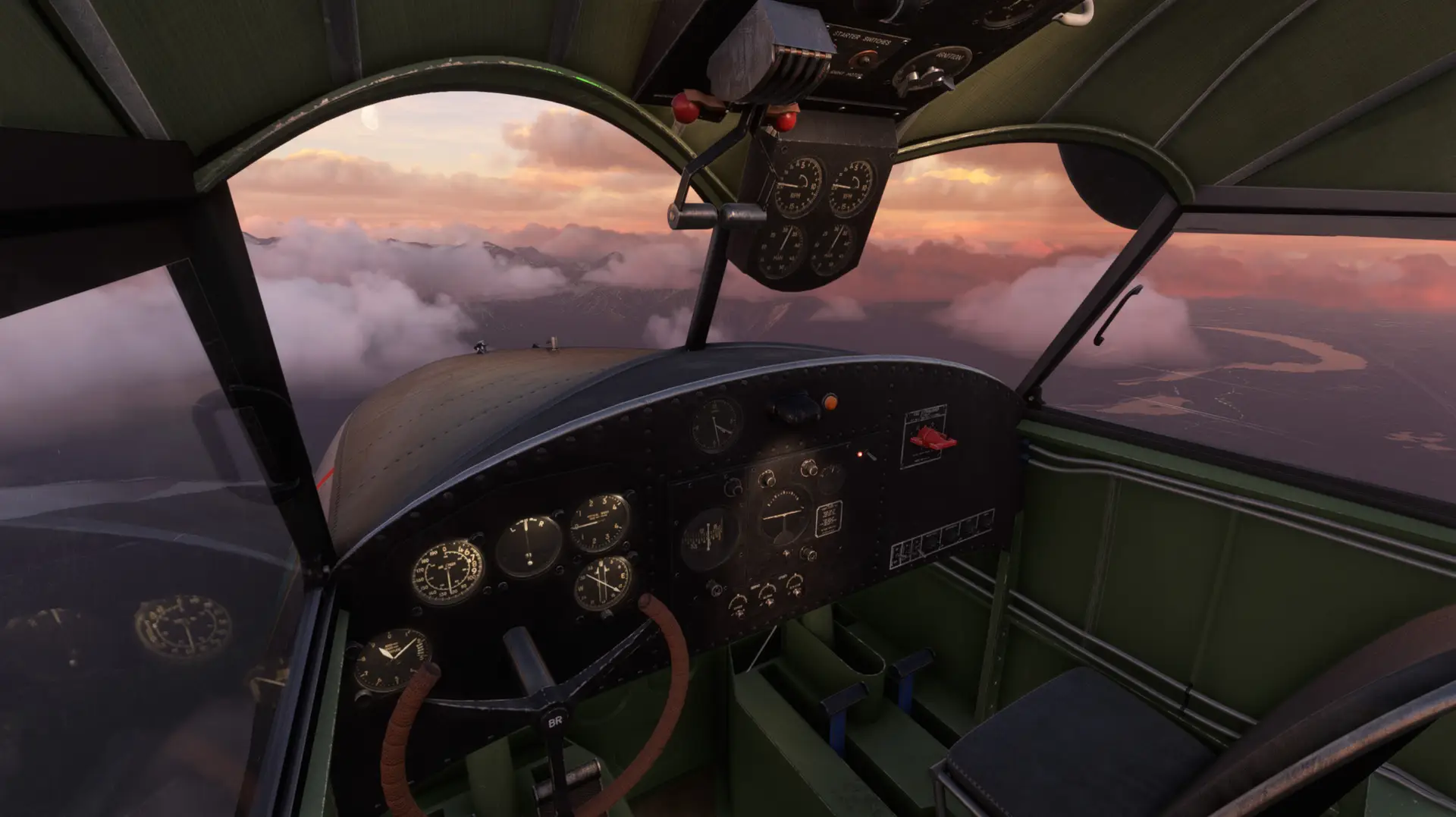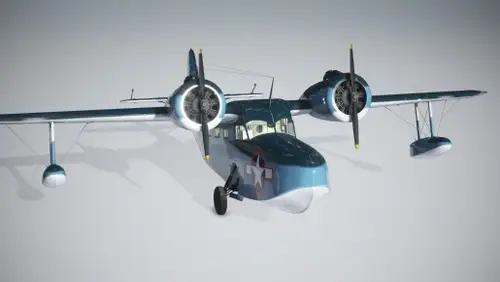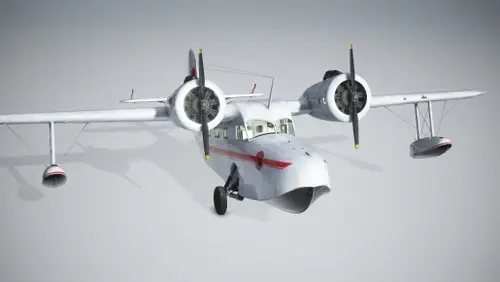- USD 19.99
- -30%
- USD 19.99
- USD 13.99
- Sale Ends: January 7 2026 6:00 PM +00:00
- View more offers at FS Addon Compare
- Added: April 4, 2022
- Updated: August 3, 2023
The JRF-6B Goose is a twin-engine amphibious monoplane produced by American aviation firm Grumman. The aircraft is the military version of the Grumman G-21 Goose that was passed to the Royal Air Force in the early 1940s through the Lend-Lease program. It was used as a navigational trainer, troop transport, and a cargo hauler. The Goose, took its maiden flight on May 29, 1937. Of 345 built, 50 were designated JRF-6Bs.
The JRF-6B features a floating hull “flying boat” design that has a retractable taildragger undercarriage for terrestrial use. The six-place Goose has a high wing with a span of 49 feet, 0 inches, a standard empennage, and pontoon floats for stability on the water. It is powered by two wing-mounted Pratt & Whitney R-985-AN-6B Wasp Junior 9-cylinder radial engines that each generate up to 450 horsepower and turn a 2-blade variable-pitch propeller.
The Goose has a range of 560 nautical miles, a cruising speed of 120 knots, and a top speed of 200 mph. It climbs at 1,100 feet per minute and has a service ceiling of 21,300 feet above sea level, though altitudes over 10,000 feet require oxygen for the crew as the cockpit is unpressurised.
Initially designed as a speedy way for businessmen to commute between their homes in Long Island and their offices in Manhattan, the Grumman JRF-6B has built a proven legacy over the decades as a go-anywhere utility vehicle that can handle the toughest of conditions. Aviators can operate out of just about anywhere, on land or on water, with the Goose, and live the legend of this versatile craft.
Features:
Native flight model, high detail 3D assets, authentic radial sounds, 4K PBR textures
Engine failures and effects
Bushtrip: Go on a Canadian Fishing Holiday departing from Seattle, WA to Stewart BC
More Bushtrips planned and a special appearance?
Find the hidden console if you're not ready to give up your GPS just yet.
Fishing pole and stool. Ready to throw in a line after flying into that remote Alaskan lake?


















